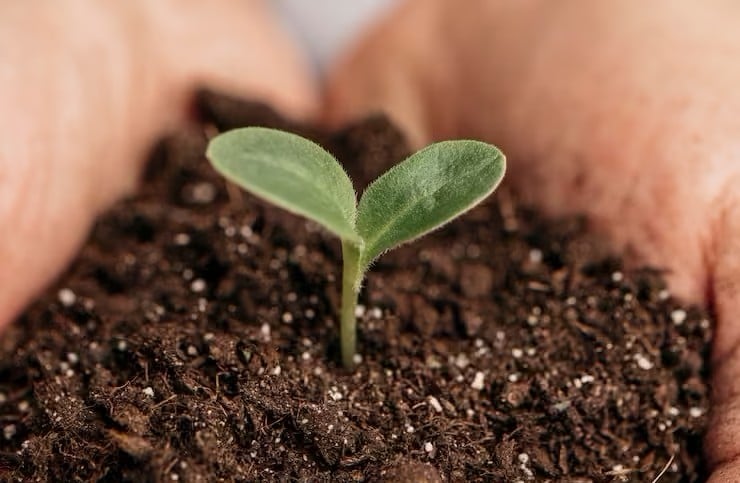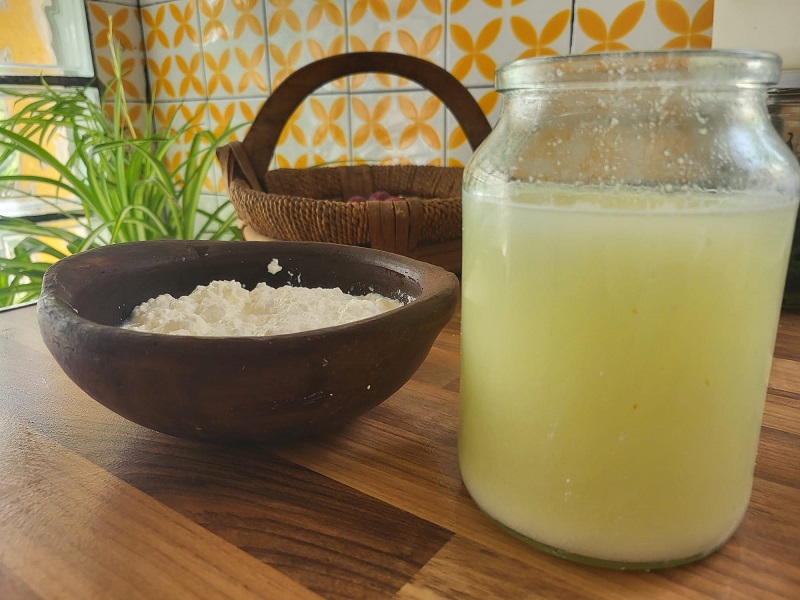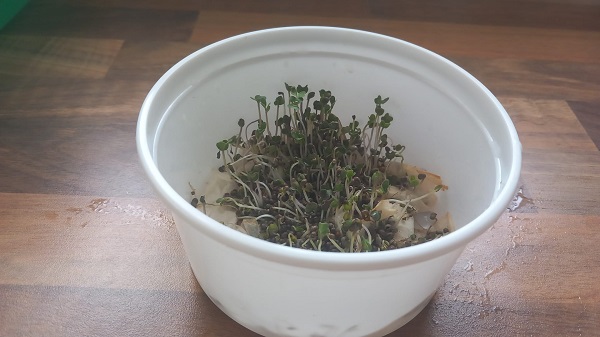Plants, just like us, need nourishment to grow healthy, strong and full of life. If you’ve ever read a fertilizer label, you’ve probably come across a mysterious acronym: NPK. These letters represent the three main nutrients that every plant needs to thrive: nitrogen (N), phosphorus (P) and potassium (K).
These elements are naturally present in the soil, but when we cultivate in pots, urban gardens or exhausted soils, it is common that they are gradually lost. That is why it is important to replenish them.
But… how do we do it in an environmentally friendly way?
In the world of conventional cultivation, it is common to resort to synthetic fertilizers, which provide NPK quickly, but also generate imbalances in the soil, contaminate aquifers and harm microbial life. However, from an ecological point of view, we propose a different way to take care of your plants and nourish the soil with natural, sustainable and homemade materials…
In this guide we explain what NPK is, why it is important for your plants and how you can provide each nutrient in an ecological way, without resorting to industrial products. You will see that with organic waste, wild plants and a little knowledge, you can bring life back to the soil and grow in a more conscious way.
What is NPK?
NPK is the basic formula found in most fertilizers and manures, and represents the three primary macronutrients that plants need in the greatest quantity to grow healthy and strong. These three elements form the basis of plant nutrition, and although each plant has different needs according to its species and stage of development, they all depend to a greater or lesser extent on a good balance between them. NPK acts as “fuel” for the soil, allowing our plants to carry out essential processes such as photosynthesis, root growth, flowering or fruit production.
When we talk about organic fertilization, it is important to remember that it is not simply a matter of “feeding” the plant, but of caring for the health of the soil, respecting its natural cycles and encouraging the microbial life that makes the absorption of these nutrients possible. Regenerative agriculture, composting and green manures are some of the practices that help us to maintain this balance without depleting the ecosystem.
In this context, organic NPK does not come from synthetic chemical compounds, but from natural sources such as composted manure, rock meal, plant extracts, worm castings or home-made ferments. These fertilizers not only provide nitrogen, phosphorus and potassium, but do so in a more gradual and sustainable way, feeding the soil microorganisms as well. Thus, instead of forcing rapid growth, the healthy and resilient development of the plant is supported over time.
How to obtain NPK from natural sources?
If we want to fertilize our plants in an environmentally friendly way, the first step is to know where we can obtain nitrogen, phosphorus and potassium without resorting to chemicals. Fortunately, nature offers us many ways to replenish these nutrients using materials that are accessible, sustainable and often present in our own homes.
Instead of applying NPK in isolation, organic farming and gardening relies on complete and balanced fertilizers, such as compost, slurry or worm castings. But if you ever need to reinforce a particular nutrient, you can also use specific sources for each of them.
Below is a list of the most common natural sources for each macronutrient:
Natural sources of Nitrogen (N)
Nitrogen is essential to boost the vegetative development of the plant, stimulating the production of green leaves, strong stems and rapid growth. It is also especially important in the early stages of cultivation or in leafy plants such as lettuce, spinach or parsley.
This is found mainly in materials rich in proteins and fresh organic compounds, such as:
- Green kitchen scraps (fruit skins, peels, coffee grounds)
- Fresh or composted manure (especially chicken or rabbit manure)
- Nettle or comfrey slurry.
- Legumes and nitrogen-fixing crops (such as clover or alfalfa)
And although it is essential to boost development, we must not forget that providing it in excess can be detrimental, causing the plant to grow unbalanced, becoming more fragile and prone to disease.
Natural sources of Phosphorus (P)
Phosphorus is essential for the development of healthy and deep roots, flowering and fruiting. It is also involved in internal plant energy processes, such as photosynthesis and cell division. It is especially important in plants that are initiating their development or in crops that produce flowers and fruits, such as tomatoes, pumpkins or fruit trees.
This macronutrient, unlike the previous one, is more easily found in materials of animal or mineral origin, for example:
- Bone meal.
- Wood ash (this also provides some potassium, but very little should be added as it is very acidic).
- Guano (dried seabird droppings, highly concentrated)
- Well-ripened compost with fruit and seed residues.
A lack of phosphorus in our plants can result in slow growth, dark leaves or difficulty in flowering.
Natural sources of Potassium (K)
Potassium helps the plant to regulate the water balance, the circulation of nutrients and the activation of enzymatic processes that strengthen our plants. It also favors the formation of tastier fruits, intensifies the color of flowers and improves tolerance to drought, cold or certain diseases.
This one can be found in:
- Wood ash (especially from fruit trees)
- Banana peels buried or dried and crushed.
- Comfrey or horsetail slurry.
- Molasses diluted in water (also providing minerals and sugars)
- Compost with remains of ripe fruits and vegetables.
When it comes to detecting potassium deficiency in our plants, we notice it in the appearance of burnt edges on leaves, premature wilting or poor quality fruits.
How to apply NPK naturally to your plants?
Once we understand what NPK is, what it is used for and how to obtain it from natural sources, comes the practical part, how to apply it to the garden or to our pots without resorting to chemical products.
The key is to know the needs of our plants, the state of the soil and how to release nutrients gradually, respecting the cycles of nature. Unlike synthetic fertilizers, which act immediately but aggressively, organic inputs work as a “slow feeding”, more stable and beneficial in the long term.
Therefore, the most effective and sustainable methods to apply NPK naturally are:
Mature compost: a balanced and complete NPK.
Homemade compost is one of the most complete and balanced natural fertilizers. Although its exact NPK content depends on the materials used, it usually provides a good base of nitrogen (especially if it includes green waste and manure), some phosphorus (through eggshells or crushed bones) and potassium (in fruit scraps and vegetable ashes).
It can be applied directly to the soil or as mulching, thus favoring moisture retention and microbial life.
When and how to apply it:
- In spring and autumn, when we prepare the substrate.
- In this case, we will apply it once a month spreading a thin layer on the soil.
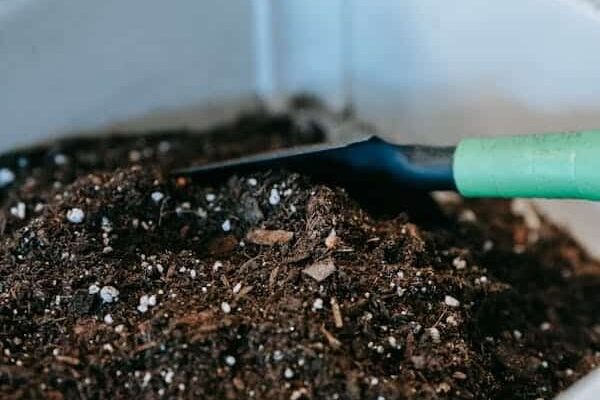
2.- Fermented slurry and extracts: fast and natural absorption
The vegetable slurries and fermented extracts are one of the most effective and natural ways to provide nutrients to our plants, especially when we are looking for a faster effect. We make them from fresh plants fermented in water for several days, which allows us to release the minerals and beneficial compounds they contain.
In addition to being an excellent source of NPK, they provide enzymes, organic acids and beneficial microorganisms, improving soil health and reinforcing the natural defenses of plants, being also very useful to reinforce growth at key moments such as flowering or fruiting.
When and how to apply it:
- Diluted as a fertilizer (1:10), it is applied directly to the substrate.
- Sprayed on leaves, diluted at 5% (1:20).
- Reinforcement at key moments (after transplanting, during active growth or if deficiencies are detected).
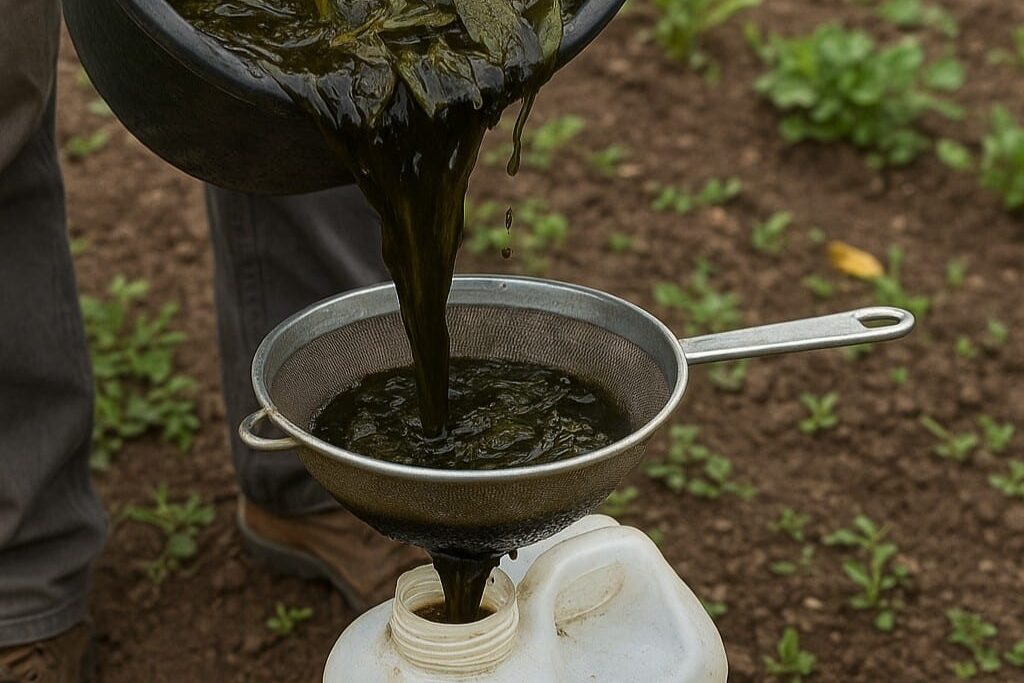
Mulching with vegetable waste and composted manure.
Mulching the soil with nutrient-rich materials is another way to feed our plants naturally. Organic mulching (with dry leaves, straw, compost, banana peels or kitchen scraps) decomposes little by little, releasing NPK. It also protects the soil from the sun, maintains humidity and favors biodiversity.
When and how to apply it:
- Throughout the year, especially in long-cycle crops.
- Renew or add another layer every 2-3 weeks.

Flours and mineral powders
Certain natural ingredients, such as bone meal (phosphorus), blood meal (nitrogen), wood ash (potassium) or rock dust, can be added to the soil as concentrated, slow-release amendments. They are ideal for preparing the substrate at the beginning of cultivation or to reinforce specific areas.
When and how to apply it:
- Mixed with the substrate before sowing or transplanting.
- On the surface, raking lightly for its incorporation.
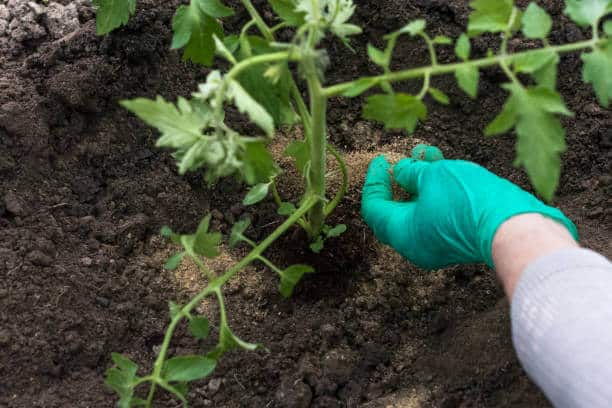
5.- Crop rotation and association with fixative plants.
Another method of obtaining NPK naturally is through crop rotation and association with soil-improving plants. Leguminous plants, for example, fix atmospheric nitrogen in the soil, leaving a fertile base for the next crop. We can also sow green manures (such as clover, vetch or mustard), cut them before flowering and incorporate them into the soil as organic matter rich in NPK.
When and how to do it:
- Between seasons, letting the soil rest with a “green crop”.
- As part of a rotational design in beds or large pots.
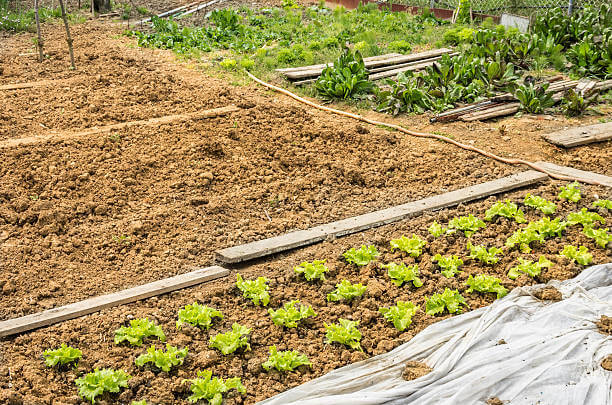
Important precautions
- Don’t overfeed your plants, even natural fertilizers can cause damage if applied in excess.
- Observe the signs of soil and plants. Before adding nutrients, look at the general appearance: yellow leaves, small flowers or sparse fruit may indicate specific deficiencies, but may also be due to other factors such as watering or sun exposure. Learn to identify these symptoms to act more precisely.
- Avoid applying fertilizers just before heavy rains, as nutrients are likely to be washed away before the plant can absorb them.
- Respect the decomposition times. Some ingredients, such as fresh manure or certain kitchen scraps, need time to decompose properly before their nutrients are available and will not cause damage.
- Less is more. In organic fertilization, a small dose well applied can be much more effective than large quantities. It is always better to start small, observe how our plants respond and adjust according to their real needs.
To make it easier for you to provide NPK naturally to your plants, here is a selection of recommended products where you can obtain these nutrients:
🌾 Alfalfa Seeds
A basic for soil improvement, nitrogen fixation and vitamin-rich shoots.
👉 View on Amazon🦴 Bone Meal
Provides essential phosphorus and calcium, improving root development and flowering of your plants.
👉 View on Amazon🍯 Cane Molasses
A basic to nourish and activate the soil in a natural way, it provides energy and nutrients to your plants.
👉 View on Amazon
